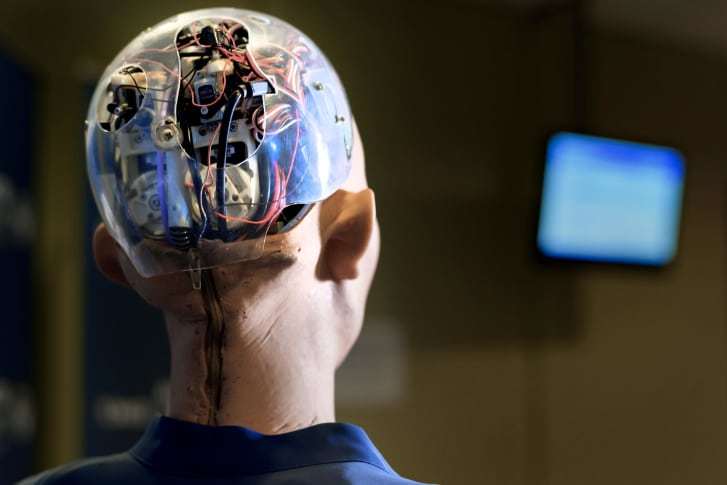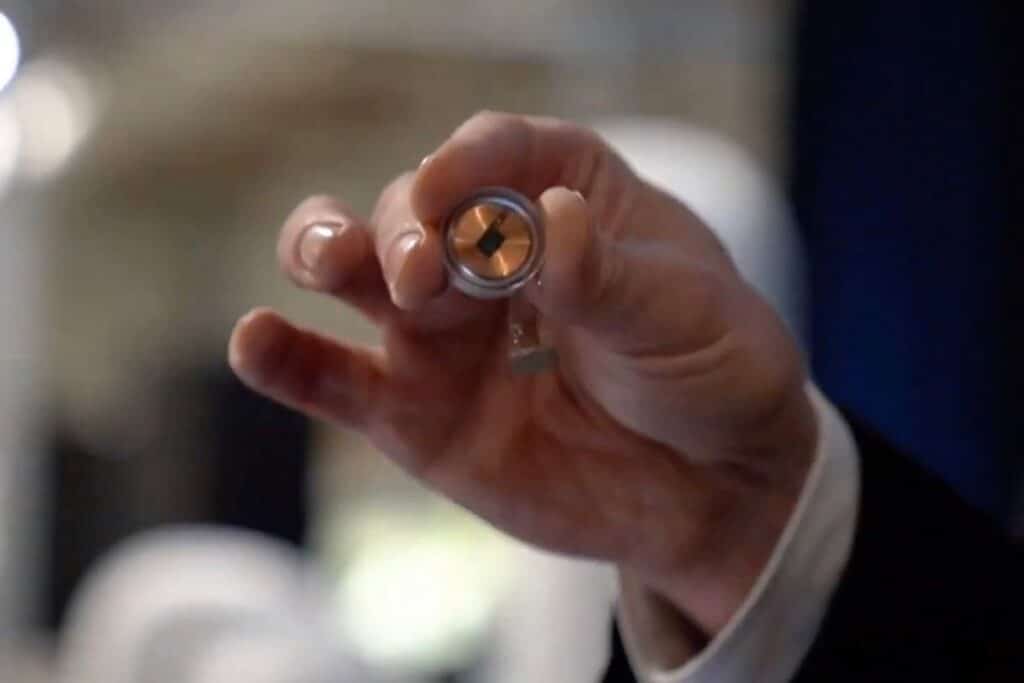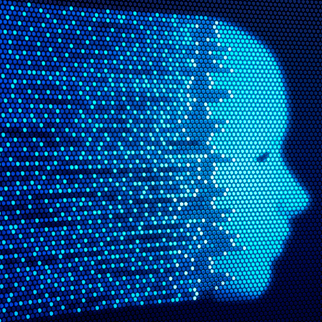Neuralink and the Brain Revolution: Connecting Minds and Gadgets for a Transformative Future”.
At the convergence of technology and biology, the notion of gadgets connected directly to the human body has become a tangible reality thanks to innovations such as Neuralink. This disruptive breakthrough raises fundamental questions about the specialized expertise it offers, customized strategies for implementation, potential time and resource savings, and the key reasons driving the integration of gadgets with human biology. In this extensive analysis, we will explore the nuances of this exciting technological development.
At the crossroads between artificial intelligence and medicine, the emergence of telemedicine has marked a significant milestone. This phenomenon redefines the way people access medical care, enabling virtual consultations, remote monitoring and remote diagnostics. We will take an in-depth look at the specialized expertise that telemedicine offers, the personalized strategies driving its adoption, the potential time and resource savings, and the key drivers that are transforming healthcare delivery through digital connectivity. In this comprehensive analysis, we’ll explore the ins and outs of this exciting advancement in modern healthcare.
Understanding Neuralink:
Definition and Scope: Neuralink, founded by Elon Musk, is embarking on the creation of brain-machine interfaces (BMIs) that enable direct communication between the human brain and electronic devices. This revolutionary approach seeks to overcome physical and cognitive limitations, opening the door to a new realm of possibilities for humanity.
Specialized Experience: The specialized experience with Neuralink lies in the ability to interact with devices and systems without the need for physical intermediaries. The speed and precision offered by this direct connection with the brain promise to change the way we perceive and participate in the digital world.
The emergence of augmented reality (AR) has redefined the specialized experience of digital interaction. By using the superimposition of virtual elements on the real world, AR offers a unique immersion that transforms how we perceive and engage in digital environments. From entertainment applications to educational solutions, augmented reality delivers an immersive experience that merges the virtual and the real, providing a new paradigm in interaction with digital information.
Specialized Experience with Neuralink:
Fine Device Control: Neuralink’s brain-machine interface enables extremely precise control of electronic devices. From basic movements to complex commands, the experience translates into a more fluid and natural interaction with technology.
Potential for Augmented Reality: The specialized experience is amplified with the potential to integrate Neuralink with augmented reality (AR) technologies. This could lead to a fully immersive digital experience where digital information is seamlessly integrated with physical reality, transforming the way we learn, work and are entertained.
The revolution in the healthcare industry through telemedicine has marked a milestone in specialized expertise in the medical field. The ability to connect with healthcare professionals and access medical services from the comfort of home offers a personalized and convenient experience. Telemedicine not only reduces geographic barriers, but also optimizes patient time and provides a more accessible approach to healthcare. This evolution in healthcare highlights the importance of technology in creating specialized experiences that improve quality of life.
Personalized Strategies for Neuralink Implementation:
Individual Needs Assessment: Given the intimate nature of Neuralink, personalized strategies must begin with a detailed assessment of individual needs and desires. Successful implementation involves understanding how people want to interact with technology and how Neuralink can improve their quality of life.
Gradual Approach and Continuing Education: Personalized strategies should take a gradual and educational approach. Ongoing education is crucial to ensure that users fully understand the capabilities and limitations of Neuralink, enabling them to make informed decisions about its use.
In the field of emerging technologies, such as Neuralink, the implementation of personalized strategies requires careful consideration of ethical and privacy issues. Ensuring security and respect for individual rights must be a top priority in the development and adoption of brain-machine interfaces. In addition, the design of clear policies and regulations is essential to guide the implementation of Neuralink in an ethical and responsible manner, avoiding possible abuses and protecting the integrity of users. In this sense, collaboration between developers, regulators and privacy advocates will be essential to ensure a future in which the integration of technologies such as Neuralink is done in a safe and ethical manner.
Saving Time and Resources with Neuralink:
Automating Everyday Tasks: Direct connection to Neuralink could simplify and automate everyday tasks. From turning on lights to sending messages, the ability to perform actions with thought could save time and energy, improving daily efficiency.
Advances in Medicine and Rehabilitation: In the medical field, Neuralink presents opportunities to accelerate rehabilitation and improve quality of life for those with disabilities. The ability to control prosthetic limbs or other medical devices through brain signals can reduce dependence on caregivers and medical resources.
On the medical technology horizon, advances in artificial intelligence and the integration of brain-machine devices such as Neuralink offer transformative prospects for healthcare. Neuralink’s personalization and adaptability make it possible not only to improve the quality of life of those with disabilities, but also to advance the development of personalized therapies and treatments.
From post-injury rehabilitation to the management of complex medical conditions, the direct connection to the brain provides a new set of tools to address medical challenges and improve patient outcomes. This potential impact on healthcare presents an exciting vision of a future where technology not only saves time and resources, but also contributes significantly to people’s well-being and health.
Relevant Keywords:
Brain-Machine Interface (BMI): This keyword highlights the general category of technologies that connect the human brain with machines, underscoring the broader context in which Neuralink is situated.
Brain Augmented Reality: Highlights Neuralink’s convergence with augmented reality, focusing on the potential to create digital experiences directly in the mind.
Neuralink Medical Applications: Focuses on the medical aspect of Neuralink, highlighting its utility in the medical and rehabilitation fields.
The transition to a future where mind and technology converge opens up a spectrum of fascinating possibilities, and Neuralink occupies a prominent place in this brain revolution. From brain-machine interfaces that redefine human interaction with electronic devices to the exploration of medical applications that could transform medical care, Neuralink becomes a beacon of innovation in today’s technology landscape.
Moreover, its fusion with brain augmented reality promises an entirely new digital experience, directly woven into the fabric of our perception. These keywords capture the breadth and depth of Neuralink, which is not only a technological feat, but also a catalyst for a paradigm shift in our relationship with technology and health.
Transformative Potential for Disability:
Neuralink offers a beacon of hope for those with physical disabilities by providing a direct interface to the brain. This technology has the potential to restore motor and sensory functions, improving the quality of life for people with disabilities and reducing their dependence on traditional assistive devices.
Overcoming Communication Barriers:
The direct connection between the brain and electronic devices can revolutionize the way we communicate. For those with difficulties in expressing themselves verbally or who have lost the ability to speak, Neuralink can be a liberating tool, allowing communication through thoughts and facilitating social inclusion.
Advances in Human-Computer Interaction:
Neuralink represents a leap forward in human-computer interaction, eliminating the need for physical interfaces such as keyboards and touch screens. This breakthrough could fundamentally change the way we interact with technology, making communication and device control faster, more intuitive and more accessible.
Exploring New Cognitive Frontiers:
The Neuralink connection raises the possibility of enhancing our cognitive capabilities. From accelerating learning to expanding memory, this technology could allow us to explore new frontiers in human potential, taking us beyond the natural limitations of our brains.
At the forefront of technological innovation, Neuralink stands out not only for its potential to transform individual experience, but also for its ability to drive significant advances in the understanding and treatment of neurological diseases. By unlocking the mysteries of the human brain through brain-machine interfaces, Neuralink offers a unique perspective for addressing neurological disorders and disorders of the nervous system. Beyond direct connection to devices, this technology could become an invaluable tool for researchers and healthcare professionals, opening up new possibilities for early diagnosis and the development of more effective therapies.
Ethical Challenges and Considerations:
Privacy and Data Security:
With the integration of gadgets into the brain, fundamental concerns arise about the privacy and security of brain data. Ensuring that the most intimate and personal information is protected from unauthorized access becomes imperative to the general acceptance of this technology.
Inequities in Access:
As Neuralink advances, it is crucial to address potential inequities in access. Ensuring that this technology is available and affordable to diverse communities and not just those with significant resources is essential to avoid social gaps.
Ethical Challenges in Cognitive Enhancement:
Cognitive enhancement raises complex ethical questions. To what extent is it ethical to enhance our mental abilities? How does one balance the drive for enhancement with the need to maintain basic equality in society? These questions must be carefully considered as we move toward a more connected future.
The emergence of technologies such as Neuralink raises a number of ethical challenges, especially in the area of artificial intelligence (AI) and autonomous decision making. As AI becomes integrated into various facets of our lives, from assistive systems to autonomous vehicles, a critical need arises to address ethical questions about human responsibility and control. How do we ensure that AI decision-making is ethical and aligned with our values? Who is responsible when an autonomous algorithm makes decisions that impact our lives? These ethical considerations are essential to guide the responsible development and implementation of artificial intelligence in our society.
Additional Keywords:
Ethics of the Brain-Machine Interface: Highlights specific ethical considerations associated with the connection between the human brain and machines, focusing on issues of privacy and fairness.
Social Applications of Neuralink: Explores how Neuralink can have a direct impact on society, highlighting both its potential benefits and the associated ethical and social challenges.
The convergence of Neuralink and other brain-machine interface technologies raises not only ethical questions but also deep reflections on the social applications of these innovations. How will these technologies affect social dynamics and human relationships? Could they generate new forms of discrimination or exclusion? Exploring the social applications of Neuralink involves considering how these technologies might shape the structure of society and how we can manage them to ensure a positive and equitable impact on everyday life.
Neuralink represents an intriguing intersection between human biology and advanced technology. Specialized expertise, customized strategies, and time and resource savings are key aspects that define Neuralink’s potential impact. In the next section, we will dive deeper into these issues, exploring the key reasons behind the integration of gadgets with human biology in the Neuralink era and beyond.
the connection between gadgets and human biology, especially through disruptive technologies such as Neuralink, poses exciting prospects and significant challenges for humanity. This marriage of mind and machine not only opens the door to a new era of possibilities, but also requires us to think deeply about how we want to shape our future.
pecialized expertise with Neuralink promises a revolution in human-computer interaction, taking us beyond previously conceived physical and cognitive limitations. However, this journey toward convergence between brain and technology also urges us to carefully consider personalized strategies, ensuring that these innovations are implemented in an ethical, inclusive and equitable manner.
As we explore the key rationales for integrating gadgets with human biology, from improving quality of life to overcoming communication barriers, we must simultaneously address the associated ethical and social challenges. Protecting brain privacy, ensuring fair access, and considering ethical boundaries in cognitive enhancement are essential to forging a future where connectivity between mind and technology benefits all of society.
Ultimately, as we embark on this journey toward a new era of brain connectivity, the key lies in maintaining a delicate balance between bold innovation and ethical reflection. Neuralink and similar technologies can transform the way we experience the world, but the path to this future must be charted with a deep awareness of human values and the impact on society. The brain revolution is underway, and its success lies in our ability to embrace it with responsibility and empathy.
In the journey toward the intersection between human biology and technology, it is imperative to consider the implications beyond the uniqueness of Neuralink. This brain revolution not only redefines the relationship between mind and machine, but also raises fundamental questions about the very nature of identity and autonomy.
How will the integration of gadgets with human biology affect our understanding of what it means to be human? What will be the role of individual autonomy in a world where our minds are connected to external devices? These questions invite us to reflect on the deeper impact of this revolution, exploring not only the technical capabilities but also the philosophical and existential consequences of this paradigm shift.
Key Tips on Neuralink and the Brain-Gadget Connection:
Education and Awareness:
Before considering the adoption of technologies such as Neuralink, it is crucial to educate yourself and others about the associated scope, benefits and challenges. Fully understanding the implications of the brain-gadget connection is essential to making informed decisions and fostering meaningful discussions in society.
Ethical and Social Consideration:
When exploring the integration of gadgets with human biology, it is essential to consider the ethical and social implications. Reflecting on how these technologies may affect privacy, equity and quality of life for different communities is crucial to ensure ethical development and responsible adoption.
Active Participation in Public Dialogue:
Engaging in the public dialogue about the brain-gadget connection is critical. Participating in conversations, debates and public forums helps shape the rules and regulations surrounding these emerging technologies. An informed and engaged community is key to collectively addressing the challenges and harnessing the potential benefits.
Monitoring Technological Advances:
Given the rapid evolution of technologies such as Neuralink, it is advisable to keep abreast of developments. Staying informed about new research, developments and applications ensures an up-to-date understanding of the technology and its potential impacts on society.
Advocate for Equity and Inclusion:
As these technologies advance, it is crucial to advocate for equity and inclusion. Ensuring that the brain-gadget connection is available and accessible to diverse populations, avoiding social gaps, is essential to building a future in which everyone can benefit from these innovations.
Support for Ethical Research:
Supporting ethical research and studies that evaluate the impact of these technologies in different contexts is one way to positively contribute to the development of the brain-gadget connection. Supporting research that examines the associated ethical, social and psychological issues can inform future policy and practice.
Involvement in Ethics Committees:
Participating in ethics committees and working groups related to the brain-gadget connection allows direct input into the formulation of standards and guidelines. Bringing ethical and social perspectives to these processes helps ensure that decisions are made considering a variety of viewpoints.
Preparing for Legal and Regulatory Changes:
Since these technologies may have legal and regulatory implications, it is advisable to be prepared for possible changes in the regulatory framework. Staying informed about emerging laws and regulations ensures compliance and an understanding of the ethical and legal boundaries of the brain-gadget connection.
The key in exploring the brain-gadget connection is to maintain an informed, ethical and participatory perspective. By being aware of the challenges and opportunities, you contribute to shaping a future where these technologies
As we move into the era of the brain-gadget connection, it is essential to remember that the adoption of disruptive technologies such as Neuralink involves a shared responsibility. The key lies in ethical consideration and active engagement with the social issues surrounding these innovations. In addition, ongoing education and participation in open discussions are powerful tools to ensure that these technologies are developed and used in a way that reflects the values and needs of society as a whole. Staying informed, advocating for equity, and preparing for legal changes are crucial steps in navigating this ever-evolving technological territory with wisdom and caution.
Bottom line,
The convergence between human biology and technology, exemplified by innovations such as Neuralink, presents a fascinating and challenging landscape for society. This marriage of mind and machine opens doors to specialized experiences, personalized strategies, and savings in time and resources, but at the same time, it raises ethical, social, and safety issues that must be carefully addressed. As we move into this new era of brain connectedness, it is imperative to maintain a balance between innovative boldness and ethical reflection. The brain revolution is underway, and its success will depend on our ability to embrace it with responsibility, fairness and empathy, ensuring that it benefits all of humanity.





